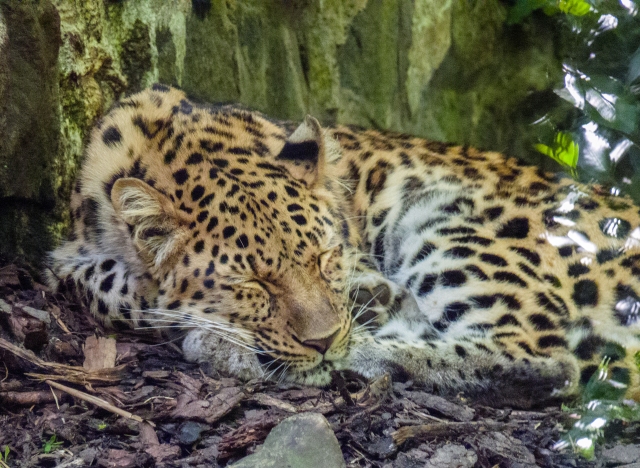
“Then the Ethiopian put his five fingers close together (there was plenty of black left on his new skin still) and pressed them all over the leopard, and wherever the five fingers touched they left five little black marks, all close together.”
In Rudyard Kipling’s Just So Stories: ‘How the Leopard got his Spots’ the leopard gets his spots so that he can blend into the background, making him better able to creep up on his prey. Kipling’s story may not actually be far from the truth of why the leopard got its spots. Minus one helpful Ethiopian hunter and add in hundreds of years of evolution and natural selection and you may be on to a winner.
A study of 35 wild cat species found that differences in coat markings are due to the differences in living conditions and hunting behaviour. There is a strong relationship between the different types of coat markings of cats and the surroundings in which they live, and the time of day in which they hunt. Cats living in rocky, open land have plain fur, such as the sand cat (below on the right) found in arid desserts, whereas cats living in forested areas, and which are nocturnal hunters, have dappled fur like that of the leopard.
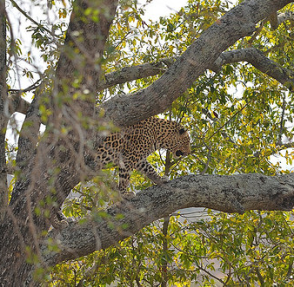
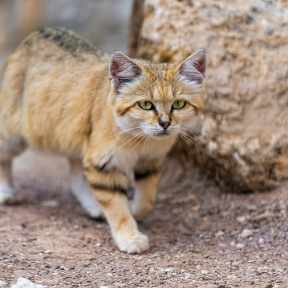
The dappled fur of the leopard, and of other wild cats living in forested habitats, aids in camouflaging the animal during hunting.You can imagine how the dappled fur of a leopard would mimic the pattern of the sun shining through the leaves onto the forest floor, and how the leopard would remain unseen slinking between the trees. This is an advantage because it decreases the likelihood of the cat being seen whilst stalking prey, and can allow the cat to get closer to their prey before initializing their attack. Leopard hunts are more successful when leopards are closer to prey when pouncing and starting the attack.
The advantage in hunting conveyed by the dappled coat markings in an individual leopard would increase its likelihood of survival and reproduction. Leopards without these coat markings would be less successful in hunting, and therefore would be more likely to die or have no offspring. In other words, leopards with the dappled markings would be better competitors for the resources needed for survival and reproduction.Consequently,over time, the number of individuals with this trait (the dappled fur) would increase in the population until it was the norm. The same principle applies to all other wild cats and their coat patterns.
The similarity of coat patterns of species living in forested areas, but on different continents, illustrate the idea that living conditions are likely to affect coat patterning of cats.The three pictures below show three different species of cat, spanning three different continents. From left to right is the Leopard cat (Asia), the Jaguar (S. America) and the Leopard (Africa). They all live in forested habitats and as you can see, are sporting very similar markings.
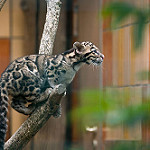
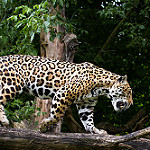
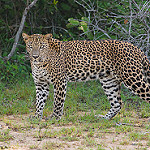
It is important to remember that in the natural world, there is often exceptions to the rule with certain species/animals not having, or showing, the expected traits. This includes animals like the innovative jaguar below, and the cheetah whose spotty fur does not suit its semi-arid habitat.
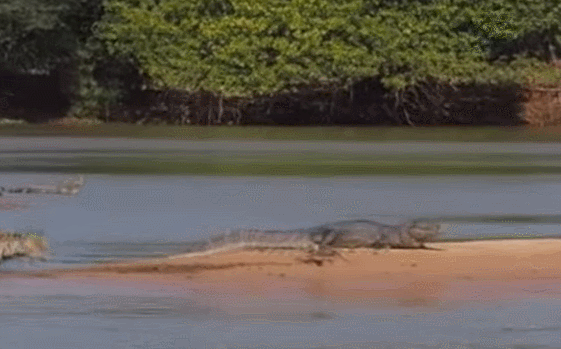
Thanks for reading!

Photo credit leopard 1:
<a href=”http://www.flickr.com/photos/39745335@N06/25220323493″>Amur leopard</a> via <a href=”http://photopin.com”>photopin</a> <a href=”https://creativecommons.org/licenses/by-nc-sa/2.0/”>(license)</a>
Photo credit leopard 2:
<a href=”http://www.flickr.com/photos/15745225@N00/21865511600″>DSC_5403</a> via <a href=”http://photopin.com”>photopin</a> <a href=”https://creativecommons.org/licenses/by-nc-sa/2.0/”>(license)</a>
Photo credit sand cat:
<a href=”http://www.flickr.com/photos/8070463@N03/10391781936″>Walking sand cat</a> via <a href=”http://photopin.com”>photopin</a> <a href=”https://creativecommons.org/licenses/by-nd/2.0/”>(license)</a>
Photo credit leopard 3:
<a href=”http://www.flickr.com/photos/50057113@N06/21902945609″>Sri Lankan Leopard</a> via <a href=”http://photopin.com”>photopin</a> <a href=”https://creativecommons.org/licenses/by-nc-nd/2.0/”>(license)</a>
Photo credit Leopard cat:
<a href=”http://www.flickr.com/photos/57256462@N07/15502996037″>clouded leopard</a> via <a href=”http://photopin.com”>photopin</a> <a href=”https://creativecommons.org/licenses/by-nc-nd/2.0/”>(license)</a>
photo credit jaguar:
<a href=”http://www.flickr.com/photos/57256462@N07/15977784014″>Porgi</a> via <a href=”http://photopin.com”>photopin</a> <a href=”https://creativecommons.org/licenses/by-nc-nd/2.0/”>(license)</a>
GIF credit: http://imgur.com/gallery/bMt1Z43
